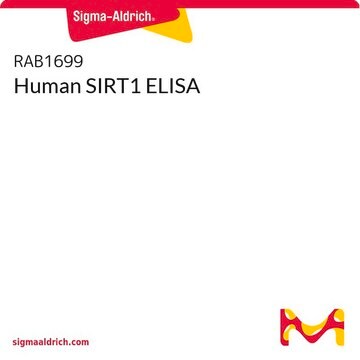S8446
SIRT1 Peptide
≥90% (SDS-PAGE), human recombinant, expressed in E. coli, N-terminal histidine tagged
Synonym(s):
SIR2α, SIR2L1, Sirtuin1
About This Item
Recommended Products
product name
SIRT1 human, recombinant, expressed in E. coli, N-terminal histidine tagged, ≥90% (SDS-PAGE), buffered aqueous glycerol solution
recombinant
expressed in E. coli
Quality Level
description
full-length amino acid sequence of original SIRT1 protein (accession number NP_036370)
Assay
≥90% (SDS-PAGE)
form
buffered aqueous glycerol solution
UniProt accession no.
shipped in
dry ice
storage temp.
−20°C
Gene Information
human ... SIRT1(23411)
General description
Application
Biochem/physiol Actions
Physical form
related product
Storage Class Code
12 - Non Combustible Liquids
WGK
WGK 1
Flash Point(F)
Not applicable
Flash Point(C)
Not applicable
Certificates of Analysis (COA)
Search for Certificates of Analysis (COA) by entering the products Lot/Batch Number. Lot and Batch Numbers can be found on a product’s label following the words ‘Lot’ or ‘Batch’.
Already Own This Product?
Find documentation for the products that you have recently purchased in the Document Library.
Our team of scientists has experience in all areas of research including Life Science, Material Science, Chemical Synthesis, Chromatography, Analytical and many others.
Contact Technical Service








